Results
-
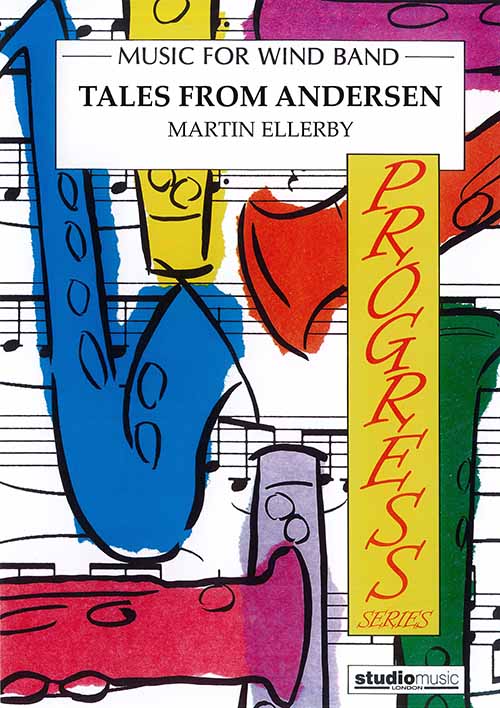 £77.95
£77.95Tales from Andersen (Concert Band - Score and Parts) - Ellerby, Martin
Having immersed himself in a translated volume of the most popular Andersen fairy tales the composer selected five contrasting stories and shapes them into a miniature suite.The movements are:Overture - The Steadfast Tin SoldierSoliloquy - The Little Match GirlScherzo - The Emperor's New ClothesIdyll - The Snow QueenFinale and Chorale - The Red ShoesDuration: 9:25Recorded on QPRM150D CHIVALRY, Royal Northern College of Music Wind Orchestra
Estimated dispatch 7-14 working days
-
 £15.95
£15.95Tales from Andersen (Concert Band - Score only) - Ellerby, Martin
Extra Score. Having immersed himself in a translated volume of the most popular Andersen fairy tales the composer selected five contrasting stories and shapes them into a miniature suite. The movements are:- 1. Overture - The Steadfast Tin Soldier. 2. Soliloquy - The Little Match Girl. 3. Scherzo - The Emperor's New Clothes. 4. Idyll - The Snow Queen. 5. Finale and Chorale - The Red Shoes. Duration: 9:25 (Recorded on QPRM150D CHIVALRY, Royal Northern College of Music Wind Orchestra)
Estimated dispatch 7-14 working days
-
 £89.99
£89.99Snow Caps (Concert Band - Score and Parts) - Saucedo, Richard L.
Commissioned by the 2004 Jefferson County Honor Band, Denver, CO, and drawing musical inspiration from the awe-inspiring surrounding mountain peaks, this major work from Richard Saucedo explores a wealth of colors and emotions possible with today's wind orchestra. At times sensitive and delicate with soloistic passages, and alternately incessantly rhythmic and powerful, this composition displays complete command of the idiom and a creative sense of harmony and form. The scoring includes an important part for piano as well as expanded parts for mallet percussion.Duration: 5:50
Estimated dispatch 7-14 working days
-
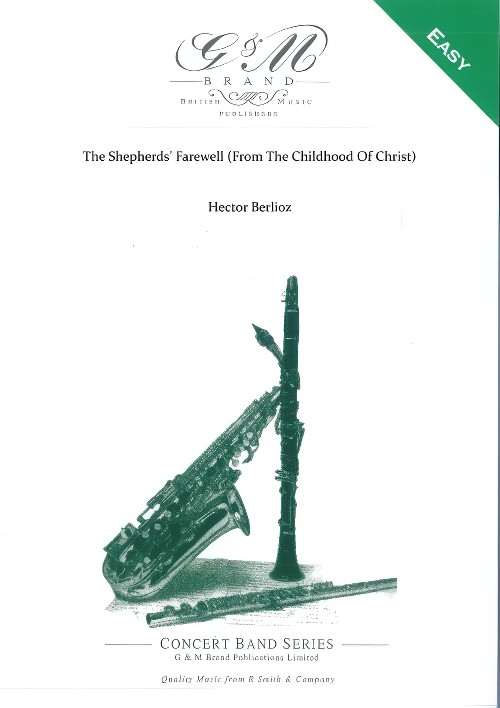 £39.95
£39.95The Shepherds Farewell (From The Childhood Of Christ) (Concert Band - Score and Parts) - Brand, Geoffrey
Brand, Geoffrey's arrangement of Berlioz's "Shepherds' Farewell" form "L'Enfance du Christ" is restrained, delicate, and contemplative. In this arrangement for small wind orchestra, the instruments are called upon to display their softer persuasive sounds in order to retain the sensitive nature of this tender music.
Estimated dispatch 7-14 working days
-
 £7.95
£7.95The Shepherds Farewell (From The Childhood Of Christ) (Concert Band - Score Only) - Brand, Geoffrey
Brand, Geoffrey's arrangement of Berlioz's "Shepherds' Farewell" form "L'Enfance du Christ" is restrained, delicate, and contemplative. In this arrangement for small wind orchestra, the instruments are called upon to display their softer persuasive sounds in order to retain the sensitive nature of this tender music.
Estimated dispatch 7-14 working days
-
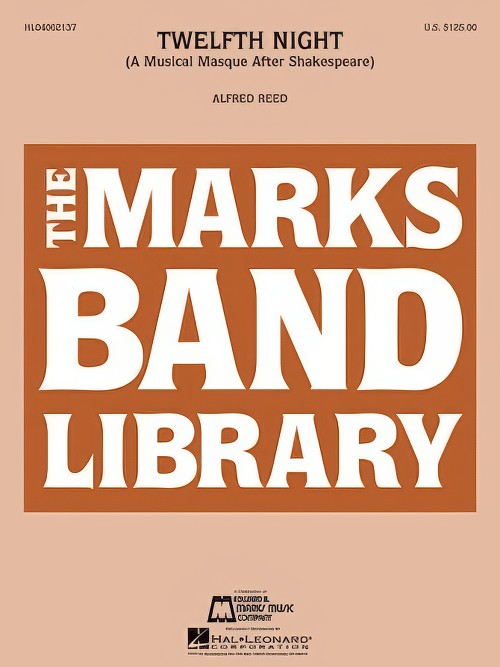 £113.00
£113.00Twelfth Night (Concert Band - Score and Parts) - Reed, Alfred
A Musical Masque after Shakespeare. Shakespeare's verse in this famous comedy, "If music be the food of love, play on..." sets the tone for this major work by master composer Alfred Reed. Approached as a masque (a form of play-with-music commonly used in Shakespeare's time), this suite for wind orchestra takes the form of five separate movements, each related to a place or persons from the story. I. Prelude: Illyria II. Viola and Orsino III. The Merry Conspirators IV. Malvolio's Lament in "Prison" V. A Double Wedding, and All's Well! Duration: 15:00
Estimated dispatch 7-14 working days
-
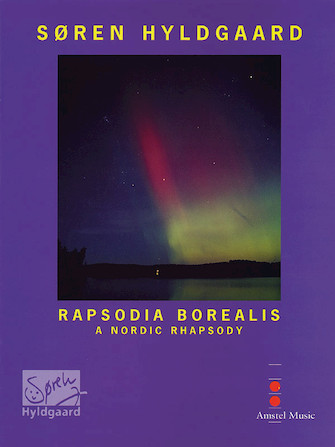 £242.00
£242.00Rapsodia Borealis (Trombone Solo with Concert Band - Score and Parts) - Hyldgaard, Soren
A Nordic Rhapsody. Composed in a circular structure and centered around a lyrical, cantabile theme, this impressive work for trombone and wind orchestra takes full sonic advantage of the medium. Containing a lyrical side of the modern concert trombone. Duration: 16.15
Estimated dispatch 7-14 working days
-
 £164.95
£164.95Euphonium Concerto (Concert Band - Score and Parts) - Ellerby, Martin
This Euphonium Concerto was written between late 1994 and early 1995 in response to a commission from Steven Mead to whom the work is dedicated. It is cast in four movements and lasts a little over 22 mins:I. Fantasy: After the briefest of introductions, the solo euphonium enters with the key melodic phrase of the movement in a fast 'Tempo I'. This idea is developed up to the point where a slower 'Tempo II' breaks the argument - here the mood is reflective but it is only to be a brief interruption as 'Tempo I' returns very quickly. The opening material is then subjected to further transformation with 'Tempo II' making occasional returns en route, the distances between the contrasting tempi becoming ever closer, and the movement closes in a rather soft though definite manner.II. Capriccio: This relatively short presto movement forms a bridge between the first movement and the work's slow movement. The majority of the band parts are bright and muted with the percussion players enhancing the texture with contributions from xylophone, glockenspiel and vibraphone. Again the initial solo euphonium phrase provides the basis for almost all the movement's material. This is extremely virtuosic for the soloist and band alike and makes great play of the rhythmic possibilities of combining simple and compound music either in close proximity or together.III. Rhapsody (for Luis): A Lento movement, sitting between two different but essentially rapid ones, this provides the work's emotional core exploiting the soloist's cantabile qualities in an almost seamless fashion. Again, as will all the work's movements, the initial idea paves the way for subsequent development, eventually culminating in a passionate climax; thereafter it winds down with an affectionate backward glance towards the close of the the slow movement of the Euphonium Concerto of Joseph Horovitz, whose mark had been made indelibly on the euphonium repertoire. This movement is dedicated to Luis Maldonado who set the full score of the brass version before his untimely death.IV. Diversions: The work's variation finale is cast in 3/4 throughout though the barline is often a guideline and was seen by the composer as a challenge of metrical restraint! There is an obvious jazz feel to this movement (both rhythmically and harmonically) with a swaggering ritornello theme first announced by the solo euphonium. Thereafter follows a series of interludes and 'adjusted' returns of the main theme. A lyrical idea is allowed to enter but the underlying momentum is ever present. The band also contributes to the interludes and eventually the tempo increases towards a 'wild' and absolute conclusion.Duration: 22.30Recorded on QPRM143D Dreamscapes, Royal Northern College of Music Wind Orchestra
Estimated dispatch 7-14 working days
-
 £32.95
£32.95Euphonium Concerto (Concert Band - Score only) - Ellerby, Martin
This Euphonium Concerto was written between late 1994 and early 1995 in response to a commission from Steven Mead to whom the work is dedicated. It is cast in four movements and lasts a little over 22 mins:I. Fantasy: After the briefest of introductions, the solo euphonium enters with the key melodic phrase of the movement in a fast 'Tempo I'. This idea is developed up to the point where a slower 'Tempo II' breaks the argument - here the mood is reflective but it is only to be a brief interruption as 'Tempo I' returns very quickly. The opening material is then subjected to further transformation with 'Tempo II' making occasional returns en route, the distances between the contrasting tempi becoming ever closer, and the movement closes in a rather soft though definite manner.II. Capriccio: This relatively short presto movement forms a bridge between the first movement and the work's slow movement. The majority of the band parts are bright and muted with the percussion players enhancing the texture with contributions from xylophone, glockenspiel and vibraphone. Again the initial solo euphonium phrase provides the basis for almost all the movement's material. This is extremely virtuosic for the soloist and band alike and makes great play of the rhythmic possibilities of combining simple and compound music either in close proximity or together.III. Rhapsody (for Luis): A Lento movement, sitting between two different but essentially rapid ones, this provides the work's emotional core exploiting the soloist's cantabile qualities in an almost seamless fashion. Again, as will all the work's movements, the initial idea paves the way for subsequent development, eventually culminating in a passionate climax; thereafter it winds down with an affectionate backward glance towards the close of the the slow movement of the Euphonium Concerto of Joseph Horovitz, whose mark had been made indelibly on the euphonium repertoire. This movement is dedicated to Luis Maldonado who set the full score of the brass version before his untimely death.IV. Diversions: The work's variation finale is cast in 3/4 throughout though the barline is often a guideline and was seen by the composer as a challenge of metrical restraint! There is an obvious jazz feel to this movement (both rhythmically and harmonically) with a swaggering ritornello theme first announced by the solo euphonium. Thereafter follows a series of interludes and 'adjusted' returns of the main theme. A lyrical idea is allowed to enter but the underlying momentum is ever present. The band also contributes to the interludes and eventually the tempo increases towards a 'wild' and absolute conclusion.Duration: 22.30Recorded on QPRM143D Dreamscapes, Royal Northern College of Music Wind Orchestra
Estimated dispatch 7-14 working days
-
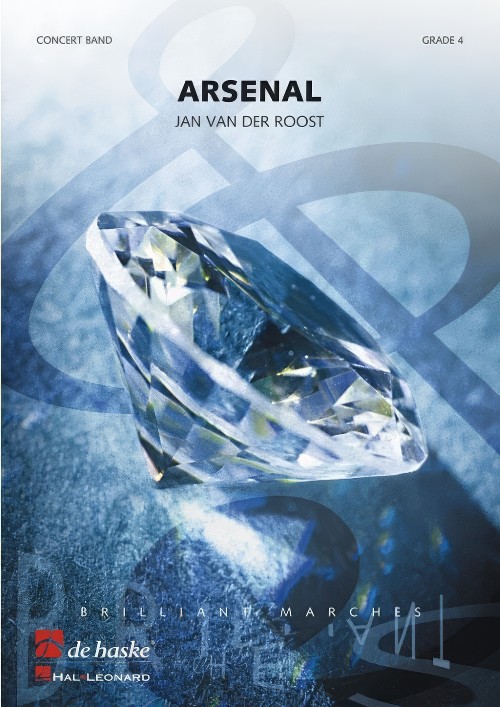 £89.99
£89.99Arsenal (Concert Band - Score and Parts) - Van der Roost, Jan
Arsenal was composed for the 50th anniversary of the 'Harmonie van het Spoorwegarsenaal' [railroad arsenal], based in Mechelen (Belgium). Rather a stately concert march, it has beautiful themes and a broad melody in the trio. It was premiered in the Mechelen Cultural Center on the 11th of May 1996 during the solemn ceremony, opening the anniversary year and conducted by the composer. In the meantime, Arsenal has been recorded several times by such reknowed performers like the Tokyo Kosei Wind Orchestra, the Black Dyke Brass Band etc.Duration: 3.30
Estimated dispatch 7-14 working days
